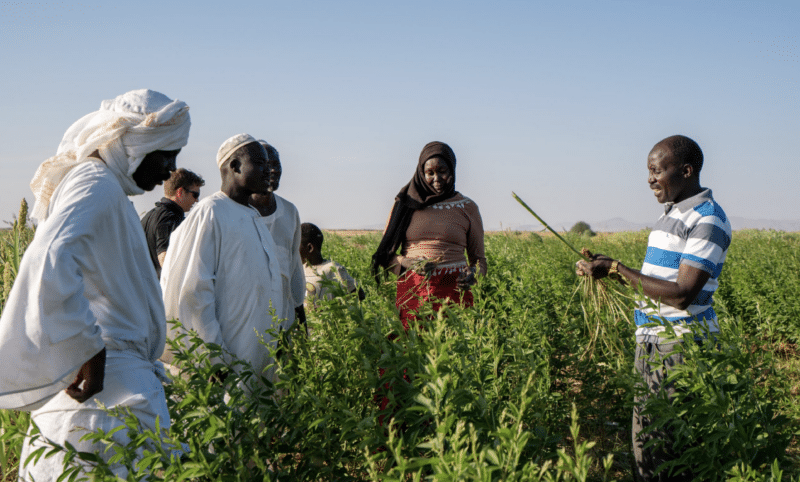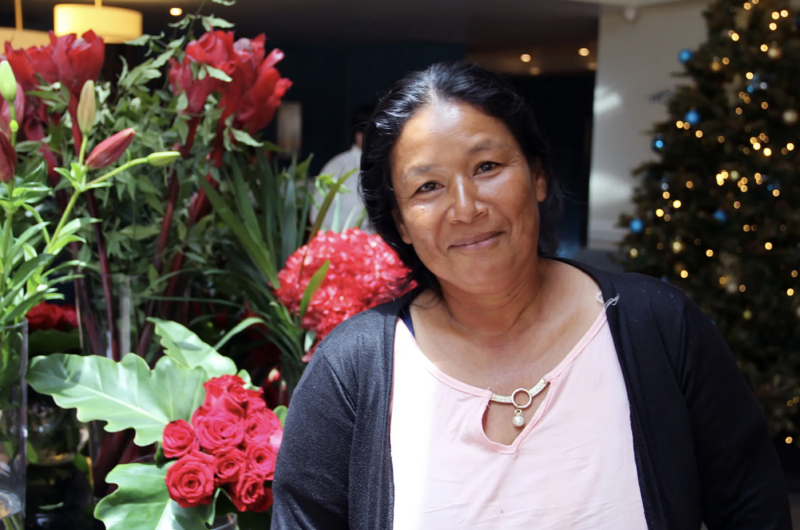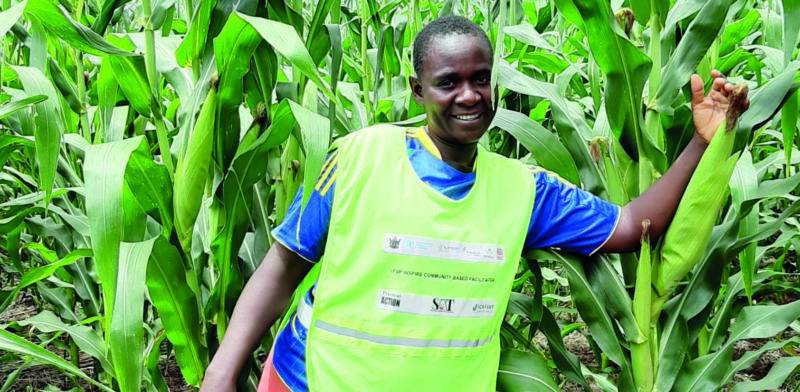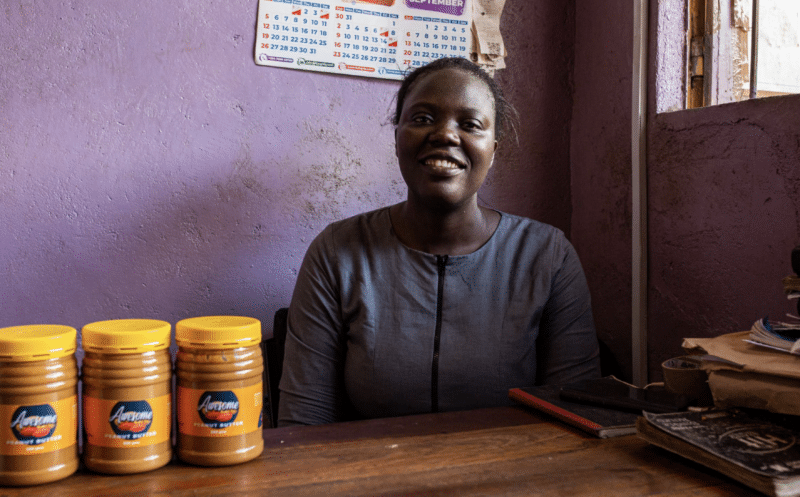Regenerative agriculture: Farming that benefits people and the planet
FarmingBlog
Practical Action has been working with smallholder farmers for over five decades
Smallholder farmers are crucial to food security and thriving rural economies – but make up three quarters of the world’s poorest people – so fundamental changes are needed.
Regenerative agriculture focuses on improving soil health and biodiversity to deliver good livelihoods for farmers and more sustainable and resilient farming systems.
Our current food and agriculture system, based on intensive agriculture, is responsible for around one-third of greenhouse gas emissions and ignores the wider ecosystem in which farmers operate, which is having devastating impacts.
One third of soils are already degraded, leading to worsening food security and productivity losses of $400 billion a year.
Agriculture is the root cause of 80% of tropical deforestation, accounts for 70% of water use and is a major contributor to water pollution. Despite this, agriculture is still not delivering food security for people who need it most – with over 800 million people still going hungry, predominantly in Africa and Asia, and with women and children being disproportionately affected.
What is regenerative agriculture?
Regenerative agriculture reduces the impact of food and agriculture on the planet by improving soil health, protecting the climate, water resources, and biodiversity. It is also helping to create resilient communities through good jobs for young people, building thriving rural economies and increased food security.
It involves a range of practices such as crop rotation, cover cropping, reduced tillage, and the use of natural fertilizers and pest control methods. It highly appreciates the knowledge of farmers and frequently builds upon traditional farming practices.
By improving soil health and increasing biodiversity, regenerative agriculture can improve the resilience of agricultural systems and reduce climate impacts and the risk of crop failure.
Practical Action’s work with smallholder farmers
We work with smallholder farmers so they can feed their families and earn a decent income – while restoring the natural resources we all rely on. We focus especially on working with young farmers and entrepreneurs, who provide the energy and drive to scale regenerative agriculture beyond their communities.
We have developed a peer mentorship model which teaches farmers and young people how to make organic pesticides and fertiliser, diversify crops and reforest. They are supported to collaborate, getting a fair price for their crops or produce, sharing information, and accessing finance to grow their businesses. Together they gain a platform which helps them influence government policy. This solution reduces dependence on expensive chemical fertiliser and increases crop yields by creating a healthy agro-ecosystem.
Below we introduce you to three of the smallholder farmers we’ve worked with. These farmers became pioneers, collaborating with us to co-design and test farming methods, sharing learning across their communities. The results went beyond food security, creating new markets and businesses. Keep reading to find out how.

Leonor grows disease-resistant coffee in Peru
For 150,000 smallholder farmers in the hills of Peru, growing coffee is a way of life. But coffee farming is highly vulnerable to the changing climate. Quality coffee beans require cool temperatures, so as the world gets hotter, farmers are struggling to grow enough to survive.
The changing climate is also bringing new diseases and pests, that can wipe out the crops a farming family rely on. We’re working with smallholders like Leonor Perez Modragon to develop sustainable farming techniques that don’t damage the region’s delicate ecosystems.
“In 2013 the yellow rust arrived and wiped out almost all my coffee plantation, production fell to 3 quintals,” Leonor told us.
We worked with Leonor so she could diversify her crop production to make it more resistant to disease. She now grows cassava, corn, plantains, vegetables, and fruits She also makes her own compost to fertilise the soil and has begun keeping bees to pollinate crops, together this supports a healthy ecosystem and increases biodiversity.
Leonor went on to explain how she’s reducing the impact her farm has on the environment. “I learned to calculate how much is invested and how much is earned” she said, “I realised that it is not about having a larger area of coffee, but rather reducing the area but increase production; The quality of the coffee improved and I was able to sell directly to the companies at a higher price.”
With the improvement of her income, Leonor has been able to pay for her children’s education. She’s also found the confidence to diversify further into other business opportunities, such as selling honey.

Shuwiso tackles drought in Zimbabwe
Another solution we’ve been supporting farmers to put into action is Pfumvudza. This innovative idea was originally developed by a local NGO in Zimbabwe and involves planting in small pot holes that trap water. Any remaining land is freed up to grow cash crops to earn an income.
For Shuwiso in Makoni, Zimbabwe, Pfumvudza has helped her support her family, despite devastating droughts caused by climate change.
After being unable to provide for her family for years due to changing weather patterns and erratic rainfall, training in Pfumvudza has allowed Shuwiso to enjoy reliable harvests. Now, she is harvesting an average of three tonnes of maize a year and supporting fifteen farmer groups to help them enjoy the same success.
Shuviso explains, “From my first year of using Pfumvudza as a way of farming, and demonstrating it to others in the village, my crops never failed. The rainfall was erratic as usual, but we got a good harvest.”
After the government of Zimbabwe’s Secretary for Agriculture visited our programme, the government decided to scale the approach. This means it will reach a further 1.8 million farmers. Even more farmers will be reached with the inclusion of the approach in the government’s overall agricultural policy. The subsequent increased food production has the potential to reach 5m people – about 1/3 of the population of Zimbabwe.

Beryl launches her own agri-business in Kenya
Lack of opportunities, coupled with droughts and consistently poor yields have driven the young generation in Kenya away from their rural farming homes to find work in busy, overcrowded cities.
Like many young Kenyans, Beryl Opiyo didn’t see any future in farming either. But with training from Practical Action, she has dared to dream big and create an ambitious new business.
Beryl began making peanut butter in a single room, roasting groundnuts in a manual roasting machine, then sorting, milling and packaging them herself. With training and determination over just a couple of years, Beryl has developed her “Awesome” peanut butter brand, using local crops to create a healthy, tasty snack.
Initially, she bought her nuts from a local market to process, but after training in regenerative agriculture techniques, she has been inspired to grow her own nuts. This will lower her costs and allow her to grow her business further.
Beryl is showing her generation that planet-friendly farming is not merely a way to put food on the table, but to build a thriving business and exciting future.
“My ambition is that my ‘Awesome’ peanut butter will become the best peanut butter company in the region. Thank you to Practical Action supporters for helping young people like me.”
Beryl is just one of 106,000 young Kenyans we’re working with in partnership with the IKEA Foundation and Mastercard Foundation to prove that regenerative agriculture can make farming an attractive livelihood once again and create thriving local economies.

The future
Our goal is to build regenerative agriculture farming networks across the globe, supporting small holder farmers to restore and heal the land.
Thanks to support from donors such as The Prince of Wales’s Charitable Fund, we are gathering evidence from different agricultural and community contexts to demonstrate how farmers can transition to regenerative farming practices. This will increase farmer, Government and business confidence, increasing adoption and investment to scale up regenerative agriculture.
With the right support, we can speed up that transition and together with you, we can re-build a world that works better for people and the planet.
Find out more about our work with farmers around the world or how we’re developing market resources that support regenerative agriculture.